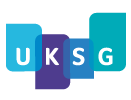The Arizona library consortium environment
The Arizona Universities Library Consortium (AULC) is a consortium serving the libraries of the universities governed by the Arizona Board of Regents (ABOR): Arizona State University (ASU), Northern Arizona University (NAU) and the University of Arizona (UA). It is a project-based entity whereby library committees are formed to study and undertake groundbreaking initiatives. The Consortium does not employ personnel nor have a formal Board of Directors. The AULC serves three universities with six campuses and a combined enrollment of 128,000 full-time equivalent students during the fiscal year 2012–2013 (FY13). Its Libraries hold 11.7 million print volumes. Because print circulation numbers are declining, a common desire among the AULC Libraries has been to collectively develop electronic holdings, including electronic books (e-books). The patron-driven model developed by the AULC is similar to the model created by ASU in 2009. To better understand the AULC model, it is helpful to review the components and reasoning associated with ASU's patron-driven initiative.
ASU Libraries patron-driven acquisition (PDA) plan
In 2009, the ASU Libraries were searching for a positive response to a student enrollment of over 70,000 students and enormous growth projections, budget and staffing constraints, and declining library collection use data. Circulation data collected over a five-year period for print books in the humanities, social sciences, and sciences and technology demonstrated that less than 50% (34,129 books) of 69,171 North American approval print books had circulated during the five-year period, 17,388 books had a single checkout (25.1%), and 16,741 items had two or more checkouts (24.2%) during the same time frame. The five-year circulation data also established that the average time from book receipt in the ASU Libraries to the first checkout was 326 days. This data compelled the ASU Libraries to re-examine the model and concept of print approval plans in the 2009 environment, and contradicted the notion that print books (p-books) should be the preferred format simply because they were typically published and available 90 days before e-books. Data strongly supported that receiving e-book content 90 days later than the norm would be acceptable to library users, and quieted the belief that library users would not allow an imposed delay to content.
“The five-year circulation data … established that the average time from book receipt … to the first checkout was 326 days.”
Following a thorough request for information (RFI) process among the leading North American approval vendors, the concept of a combined e-book and p-book acquisition plan emerged whereby student and faculty members of the ASU community would select standard North American books and their format. The plan also was constructed to prefer the acquisition of e-books over p-books. The ASU Libraries partnered with the Ingram Content Group to create the first e-book preferred plan allowing users to select books. This kind of plan is commonly termed patron-driven acquisition.
The ASU subject and area librarians, in conjunction with Ingram, took the first step and created an ASU subject-based profile, similar to traditional approval book profiles. Librarians across the four ASU campuses worked with Ingram personnel to translate current ASU curricula and research programs into the Ingram subject terminology. In a traditional approval plan, all books that match the profile are auto-shipped to a library. In the ASU plan, MARC records matching the profiled books are streamed into the online public catalog (OPAC) for community discovery; books are neither automatically shipped nor invoiced. In addition, the ASU plan offers two book formats: electronic PDA (e-PDA) and print PDA (p-PDA). Because the ASU Libraries plan is e-preferred, MARC e-book records are streamed into the OPAC immediately upon delivery and MARC p-book records are streamed into the OPAC after a 90-day hold from date of publication. When an electronic record becomes available and a record exists in the OPAC for a print version, the electronic record overlays the print record and the print record is discarded from the OPAC. The match point is the 035 field with the Ingram record number. If the loader does not find the 035 match, it inserts a new record.
The e-PDA component is straightforward. Initial records from all disciplines were loaded into the OPAC during November 2009. From a streamed MARC record, a viewer can ‘click’ to a book's information page and ultimately can decide to open the book. If opened, the book is immediately available and usable. After the third time the book is opened, an invoice is generated for the ASU Libraries. The p-PDA part of the plan required cooperative programming efforts between Ingram and ASU Libraries information technology personnel, and was implemented during August 2010. Like e-PDA records, p-PDA records are streamed into the OPAC and span all disciplines. For p-PDA books, one click from an OPAC record takes the viewer to a pre-populated order form where the requestor supplies an ASU e-mail address and pick-up location, and then confirms the order. The ASU Libraries then purchase the book and notify the requestor when the book is available for circulation.
Data: ASU Libraries PDA plan
Since e-PDA implementation during November 2009, there have been 17,629 records loaded into the OPAC. The total number of e-titles purchased from November 2009 through November 2012 was 3,238, which is approximately 18.4% of the available streamed e-records. In FY12, an average of 132 e-titles per month reached the three-use threshold, and the average monthly expenditure was US$18,506. The FY12 average price per title was US$140.00. From data sampling, approximately 43% of the purchased titles are in the social sciences, 40% in science and technology and 17% in humanities. Currently, 434,356 pages have been viewed during 26,200 sessions.
Since p-PDA implementation at ASU during August 2010, approximately 12,500 records have been loaded into the OPAC. The total number of p-titles purchased from Ingram and Amazon stock is 669, or 5.3% of the available streamed p-records. In FY12, the average monthly expenditure was US$3,475. Data samples suggest 54% of the purchased titles are in the social sciences, 24% in humanities and 22% in science and technology. Faculty and staff purchased 45% of the titles, graduate students 40% and undergraduates 15%. The time from user request to availability for pick-up averages four to seven days. The ASU cumulative expenditure for both electronic and print patron-driven plans since November 2009 remains less than one year's expenditure for the print approval book plan in 2008.
The Arizona Universities Library Consortium PDA plan
The AULC wanted to provide the opportunity to faculty and students at any of the universities governed by the Arizona Board of Regents (ABOR) to have access to a group of e-books regardless of the university attended. In 2011, UA had crafted a patron-driven plan similar to ASU's. In 2012, the AULC partnered with the Ingram Content Group and created a cooperative patron-driven model for e-books only. A core set of e-books, primarily those published in North America, was made accessible through resource discovery services and online catalogs in the AULC libraries. Emerging data is suggesting that these books are available to the ABOR universities for a cost that is significantly less than a single ABOR university would expend for the same books outside of the AULC environment.
“… cumulative expenditure for both electronic and print patron-driven plans since November 2009 remains less than one year's expenditure for the print approval book plan in 2008.”
The AULC PDA plan is similar to ASU's e-PDA plan. The shared profile covers subject, non-subject and publisher parameters that intersect the ASU and UA plans. The profile includes only e-books and excludes reference books. MARC records matching the profiled books are delivered weekly and streamed into the library OPACs for community discovery. If an e-book is not available after 90 days, a print record is sent to ASU and UA according to current specifications. AULC e-books have a 910 field with ‘AULC’. The AULC PDA plan allows unlimited simultaneous users. From a streamed MARC record, a viewer can click to a book's information page, and decide to open the book. If opened, the book is immediately available and usable. After the third time the book is opened, an invoice is generated for the AULC Libraries. Invoices are delivered monthly and payment responsibilities among the ABOR universities are simple and straightforward: ASU 40%, NAU 20% and UA 40%. Usage reports are delivered twice each month and detail the first, second and third book ‘hits’ by institution and also provide date of hit, number of pages viewed and IP address.
Since the AULC PDA implementation in August 2012, there have been 2,211 records loaded into library OPACs. The three-use threshold has been reached by 97 e-books, which have been purchased as a result, recording 4,582 page views at the time of purchase. One hundred and fifteen e-books have two uses and 2,718 page views, and 213 books have one use and 1,459 page views. The AULC average price per title purchased is US$240.89 and this cost is allocated among the AULC participant institutions. At 40% of the AULC price, ASU and UA each had an average cost of US$96.36 per title; NAU's average cost at 20% is US$48.17 per title. Although the AULC has available usage reports for only four months, usage and cost data suggest numbers are trending a similar path as those shown in the ASU PDA 2009–2012 plan.
“… these books are available to the ABOR universities for a cost that is significantly less than a single ABOR university would expend …”
Arizona students and faculty are experiencing a variety of benefits from the AULC PDA program. They select content that meets their interests and needs, and these resources are available immediately. They have access to the same core content regardless of their university affiliation or whether they are enrolled in, or instruct for, campus-based or online programs. They can read content around the clock, from portable devices, and from wherever they are located. The AULC Libraries, too, experience direct benefits from the purchase-driven program including reductions in shelving and shelf maintenance, book processing, and binding and conservation services. Annual library expenditures are lower for patron-driven materials allowing libraries to redirect funds to other resources, and to repurpose library spaces.
Future considerations
The patron-driven program is one model in the arena of digital scholarship. Patron-driven programs, especially those that are consortia based, are evolving and a number of issues remain unresolved. In addition to local questions of how consortia will create affordable profiles that satisfy a variety of member libraries and how payments will be distributed, other broader issues remain to be identified and resolved. Will patron-driven programs, together with other acquisition efforts, result in collections that meet the long-term needs of institutional, regional, national and other collaborative research programs? Or will collections become handpicked to meet only transitory individual needs? Will electronic content that is accessed, but not purchased, remain available? Will research requiring an assembly of older publications continue, change or thrive? How will the relationships among libraries, consortia, authors, readers, publishers and vendors blend and blur to enable text mining and altmetrics in digital scholarship?
As digital scholarship unfolds, there will be a place for consortia-based patron-driven e-book. Users have access to e-books matching a defined profile of titles that support curricula and research. Users select the titles they wish to view, and libraries expend a fraction of the cost for selected content instead of purchasing all titles matching a profile. The Arizona Universities Library Consortium reports a seamless user experience, and four months of data suggest a financially sound model.



